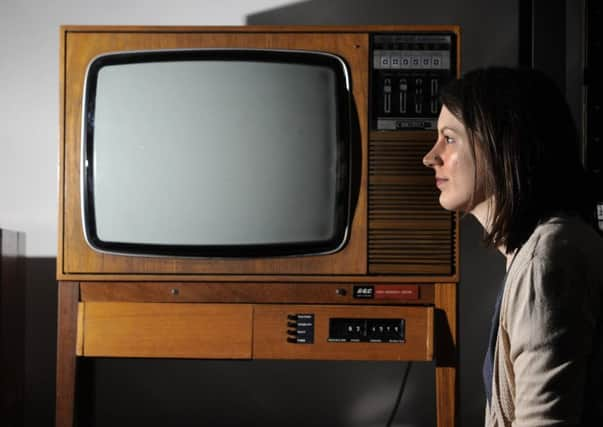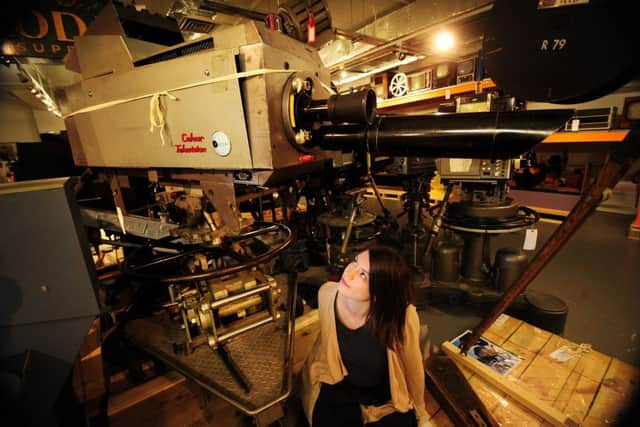50 years ago today, Britain's first colour TV broadcast from Wimbledon


Exactly 50 years ago, as he faced the South African Cliff Drysdale in the fourth round, Taylor stepped on to the centre court and into the history books.
The match was the first at Wimbledon to be televised in colour, and the first colour broadcast anywhere in Europe. It marked the start of regular colour transmissions on BBC2, even though only a few families could see them as intended.
Advertisement
Hide AdAdvertisement
Hide AdThe golden anniversary of colour TV might have passed almost unnoticed, except in Bradford, where the National Science and Media Museum has dusted off one of the corporation’s original colour cameras for a forthcoming exhibition.


The introduction of colour had been a long time coming. The BBC and the larger ITV companies like ATV and ABC had been experimenting for years, and there had been test transmissions of colour films about the stained glass in Liverpool’s new Catholic cathedral.
But the start of programmes had been delayed by TV manufacturers, unable to turn out colour sets in sufficient numbers for the previous year’s World Cup final.
Even when colour finally arrived, there were few takers. BBC2 was a minority channel and ministers had dragged their feet on allowing BBC1 and ITV to migrate. “No-one is going to buy a colour TV just to watch BBC2,” said Lew Grade, the boss of ATV.
Advertisement
Hide AdAdvertisement
Hide AdThe first colour sets were for the affluent. A 19-inch Murphy cost 285 guineas - about £5,000 allowing for inflation - and the legs were extra. Even a rental set typically required a down payment equivalent to £1,200.


BBC2 had been on the air for just three years when colour officially arrived. “You had to buy a new TV to receive it, because it broadcast on a completely different standard to the other two channels,” said Elinor Groom, curator of broadcast and TV at the museum in Bradford. “Not many wanted to buy another new set for colour, and the vast majority saw Wimbledon in black and white.”
BBC2, whose controller was David Attenborough, initially broadcast in colour for only four hours a week. Nevertheless, it was enough to persuade Morecambe and Wise to leave ATV for the BBC.
But it was sport that was the big draw. “It was a piecemeal launch, but there was something about watching sport in colour that people loved,” said Ms Groom, whose new exhibition will explore the subject. “It was often a catalyst.”
Advertisement
Hide AdAdvertisement
Hide AdNot many video tapes of early colour broadcasts survive. Even the first BBC Morecambe and Wise series was wiped, although a copy of one show turned up years later - in black and white.
The earliest surviving colour videotape from Britain is thought to be a test recording of ITV’s London Palladium Show, hosted by Jimmy Tarbuck in 1966. Viewers saw it only in monochrome but ATV used it as a dry run for an American series. The two countries used incompatible colour systems, so two sets of cameras had to record the performance simultaneously.
American viewers had been watching big shows in colour since the late 1950s. The NBC network had a vested interest in the technology - its owner was the colour TV maker, RCA.
“The European colour system came later but it was better,” said Ms Groom. “The US used a system called NTSC - critics said it stood for Never Twice the Same colour.”
Advertisement
Hide AdAdvertisement
Hide Ad• Keith Fordyce, better known as the host of ITV’s Ready Steady Go, commentated when Roger Taylor faced Cliff Drysdale, with David Vine hosting the BBC2 coverage.
Until earlier that year, there had been suggestions that ITV and BBC1 would be forced to remain in black and white.
But shortly afterwards, Yorkshire Television started work on Europe’s first purpose-built colour studios, on Kirkstall Road in Leeds, ready for the start of three-channel colour transmissions in November 1969.